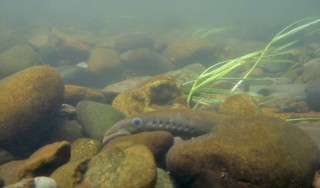Recent research by the U.S. Geological Survey and the Columbia River Inter-Tribal Fish Commission found that high levels of pesticides, flame retardants, and mercury in Pacific lamprey may be contributing to their overall decline in the Columbia River Basin. The findings were published in the journal Environmental Pollution. “The levels of contaminants we are seeing in larval lamprey have caused developmental problems in salmonids in other studies,” said Dr. Elena Nilsen, the study’s principal investigator. “That is concerning to us.” Pacific lamprey are integral to ecosystem health. They provide valuable subsistence resources to tribal communities, bring important marine nutrients into freshwater areas, and serve as a buffer against juvenile salmon and steelhead predation by sea lions, terns, and other predators by providing an alternate food source. “We can no longer ignore the role of water quality in the health of our fish populations and our communities,” said Carlos Smith, chairman for the Columbia River Inter-Tribal Fish Commission and tribal council member for the Warm Springs Tribe. “These recent findings only highlight the urgency to clean up our rivers and streams.” The research was the result of a multiagency effort. Numerous tribes and state and federal entities contributed to the work.

